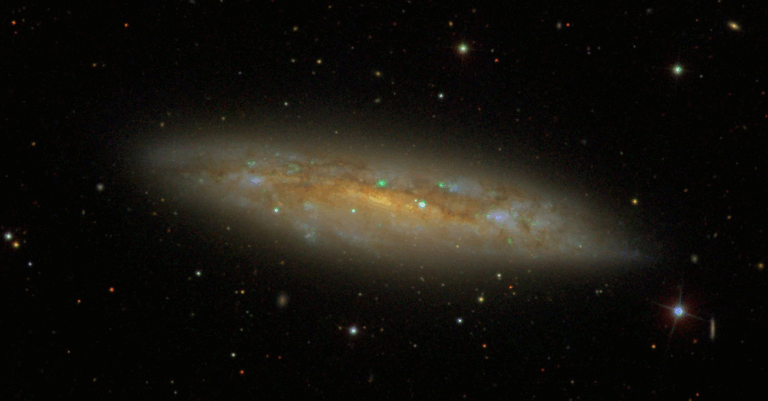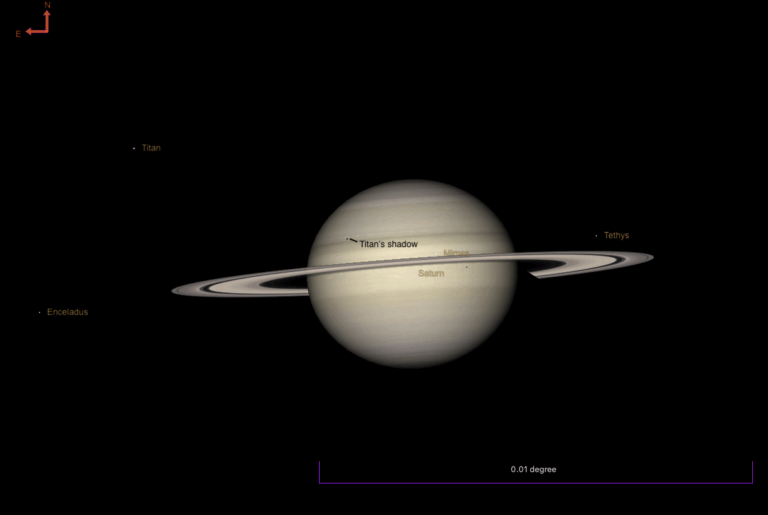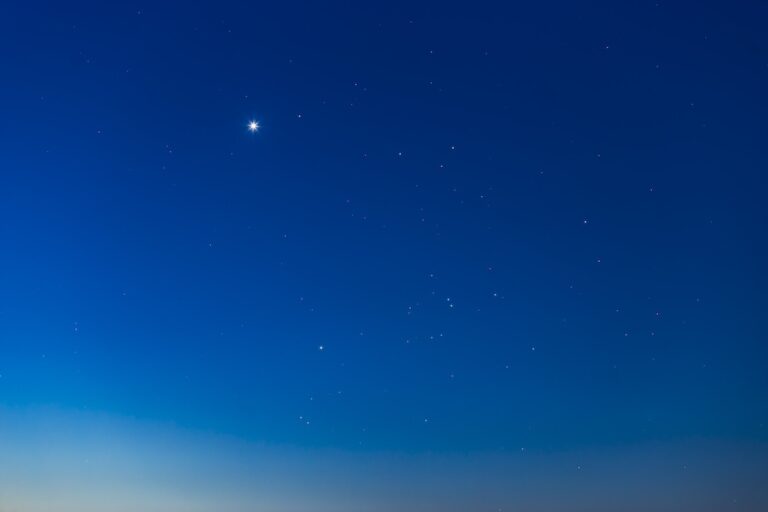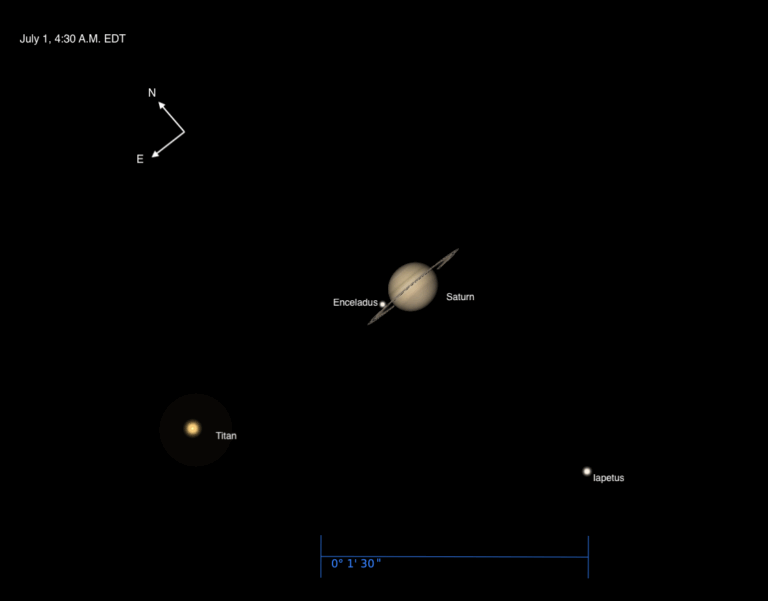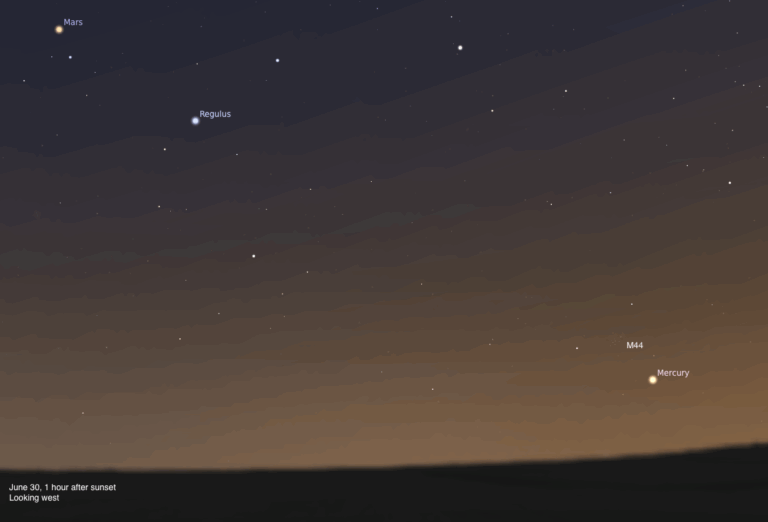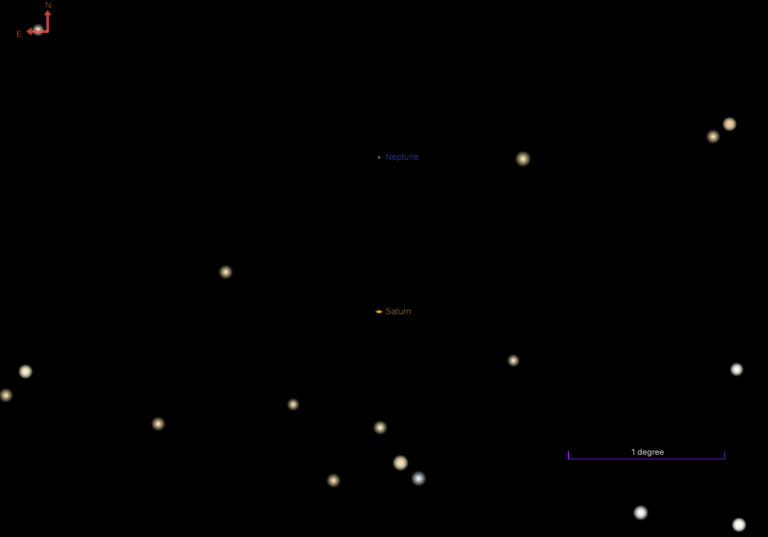
See two planets at once July 1. A wide-field view in a telescope can include both Venus and Saturn. Observers have about 2 hours after sunset to catch the pair. Click here to download a high-resolution version of this image. Credit: Astronomy: Roen Kelly.
Astronomy‘s mission:
Astronomy promotes the science and hobby of astronomy through high-quality publications that engage, inform, entertain, and inspire.
More resources from Astronomy magazine:
Astronomy news
This week’s sky events
Astronomy basics
Glossary of astronomical terms
Return to Astronomy “For the media” page
WAUKESHA, WI – Families can cap off a fun-filled weekend by seeing Venus and Saturn close together in the evening sky July 1.
For about 2 hours after sunset, the two planets appear separated by about 1½ Full-Moon widths (0.8°) from our perspective on Earth. Astronomers call such a close pairing a conjunction.
A planetary conjunction occurs when a planet is aligned from our line of sight with another object, such as a star, the Moon, or another planet.
Experts at your disposal
Astronomy magazine editors are available to discuss this event. To request an interview, please contact Matt Quandt at 262.798.6484 or [email protected].
Venus and Saturn, located in Leo the Lion, make a stunning show as darkness falls. Venus glows low in the west at magnitude -4.6, the brightest “star” after sunset, while Saturn shines 120 times fainter but still bright enough to see without the aid of binoculars or a telescope. All viewers, not just seasoned astronomers, can enjoy this planetary display. When Venus passes south of Saturn July 1, it will mark the closest conjunction between two bright planets this year. The two planets will drift more than 2 Moon-widths (1°) apart just 1 night later. By July 7, Venus and Saturn will be separated by almost 8 Moon-widths (4°).
Venus and Saturn will cross paths again in Leo in October’s dawn skies, when they form a grouping with the Moon and Regulus, Leo’s brightest star.
Anyone interested in viewing this event should visit Astronomy magazine’s online star dome. This offering provides a naked-eye map of tonight’s sky, including constellation and planet locations. Bookmark http://stardome.astronomy.com to keep track of what’s happening in your night sky.
A telescope adds to the experience
Although observers can view this conjunction without optical aid, using a telescope will add another dimension to the scene. Even at low power, a telescope will reveal Venus’ phase – a crescent only 35-percent illuminated.
Saturn, on the other hand, will be fully illuminated with its ring system on display. If the telescope/eyepiece combination has a wide-enough field of view, observers will see both planets at once. Or, they can increase the magnification and study each of these celestial showpieces in greater detail.
Take advantage of this exciting event with family members, neighbors, and fellow skygazers!

